Knowing how many amps a garage door opener uses is crucial if you're installing one or planning to purchase one. That's why we searched the internet for answers, and here is what we found.
Depending on the kind of lighting your opener has, the majority of modern garage door openers use between 3 and 5 amps.
Now your next questions may be, how much power does a garage door opener use, and what size of circuit breaker should you use? And does a garage door opener need a dedicated circuit? Keep reading as we give you the answers. Additionally, we'll cover how much power this device consumes, how much it costs to install one, and the types of garage door openers available.
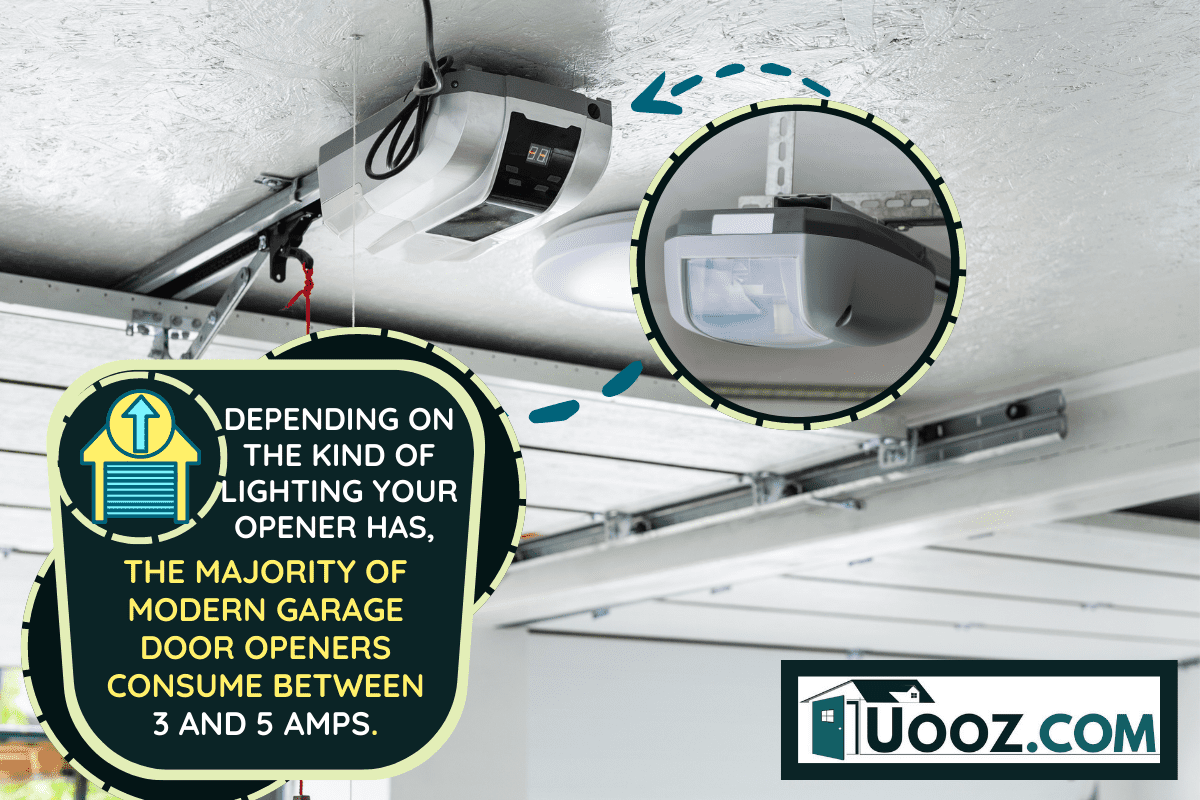
How Much Power Does A Garage Door Opener Use?
The typical power consumption of garage door openers ranges from 350 to 600 watts with an average of 500 watts.
Now, if you have the power rating of your garage door, you can compute the amperage needed by using this formula:
-
-
- A (Amps) = W (Wattage) / V (Voltage)
-
Given you have a 500-watt garage door opener connected to a 120-volt electrical line, then the amperage that your device uses is:
-
-
- A = 500 watts / 120 volts
- A = 4.17 amps
-
Therefore, a 500-watt garage door opener uses 4.17 amps of current from your circuit.
Just a reminder, the calculation of the amp and wattage ratings above uses the garage door opener's idle state and the absence of lights. Contact a licensed electrician for details on the electrical requirements for when the garage door opener is operating with the garage door in motion and under load.
Power requirements might vary depending on the type of door, the bulb type and wattage, and other variables.
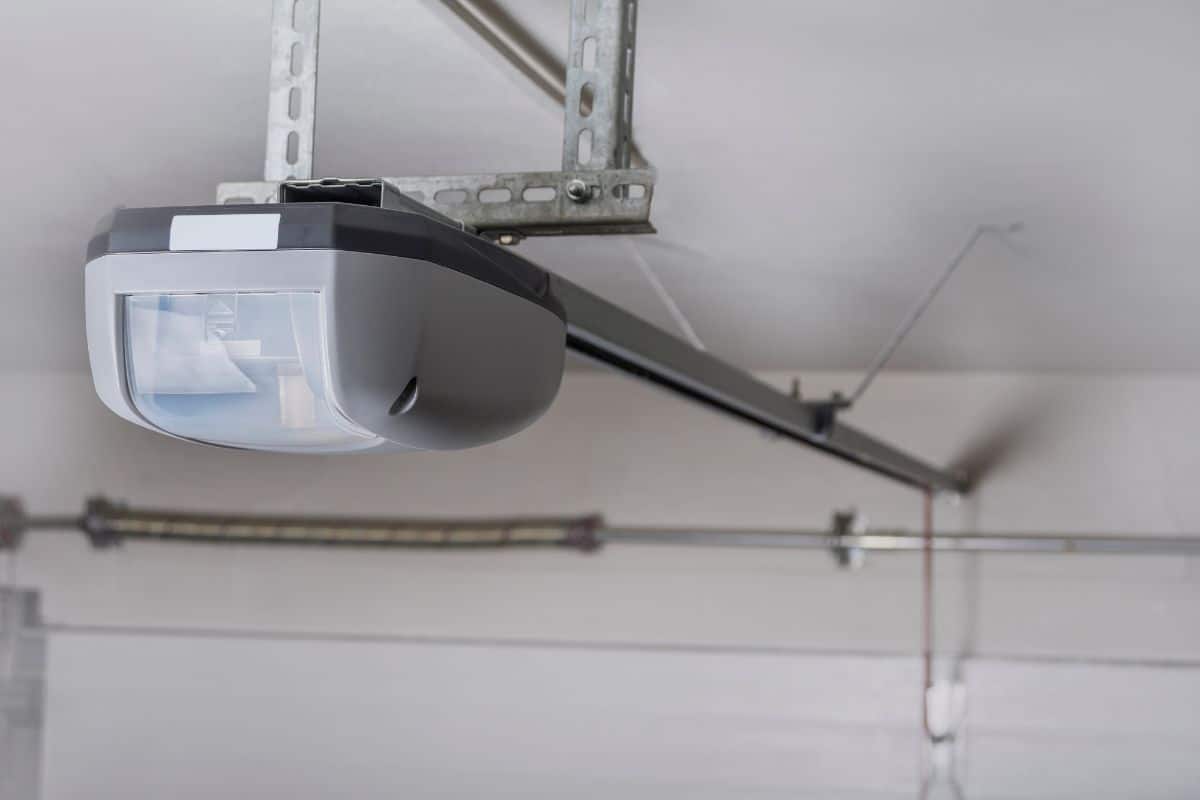
What Breaker Size Should You Use For Your Garage Door Opener?
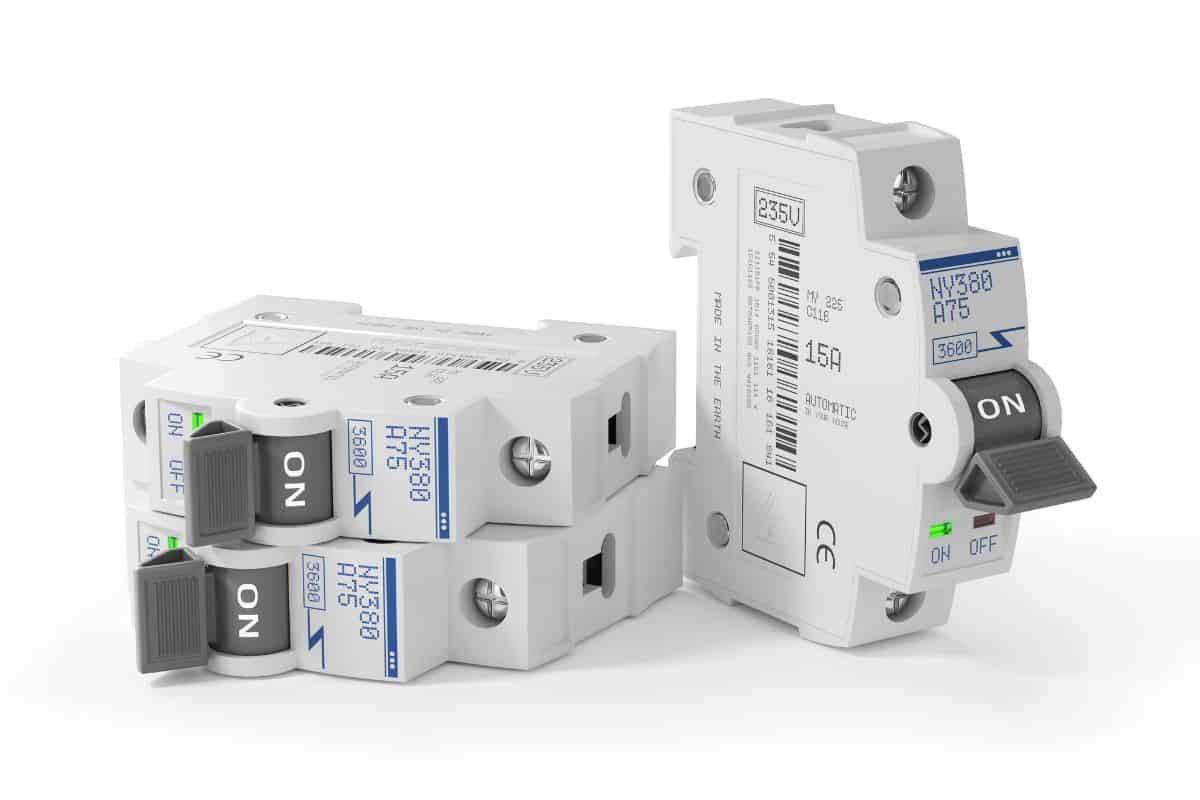
The type and number of garage door openers you have determine the size of the breaker required. A 15-amp circuit breaker is more than enough if you have a one-car garage.
You might want to think about a 20-amp circuit breaker if you have a three-car garage with three openers.
Does A Garage Door Opener Need A Dedicated Circuit Breaker?
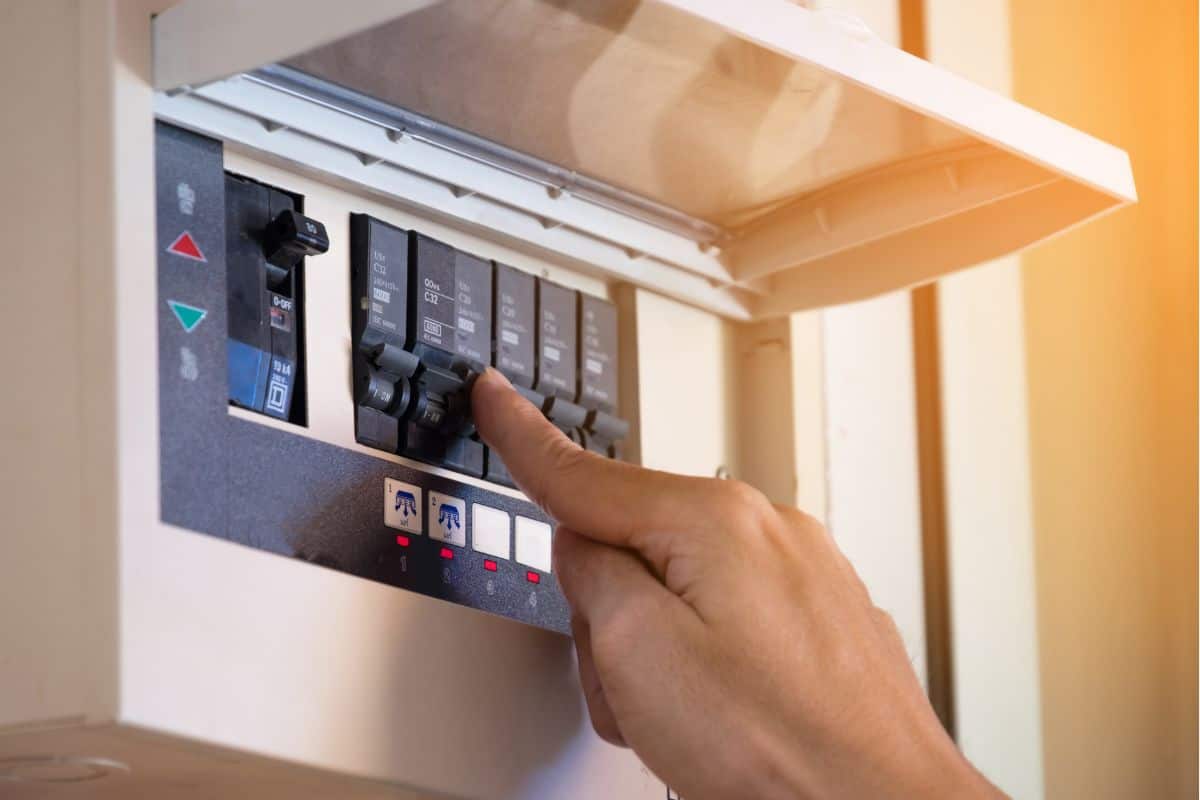
No. Any garage door opener doesn't necessitate a dedicated circuit, but it can't be linked to a wall outlet with an extension cable; a new outlet is necessary for the system.
This new amendment to the NEC 2017 states that all the garage needs is a circuit with a 20-ampere capacity to supply energy.
But you can't use the circuit for any other reasons, such as lighting the garage. The main goal of this new modification was to include a reference to the use of plug-and-cord linked garage appliances that consume less than 20 amps of power.
To avoid unanticipated problems, the use of a dedicated garage door opener circuit is encouraged. However, it's not required.
How Much Does It Cost To Install A Garage Door Opener?
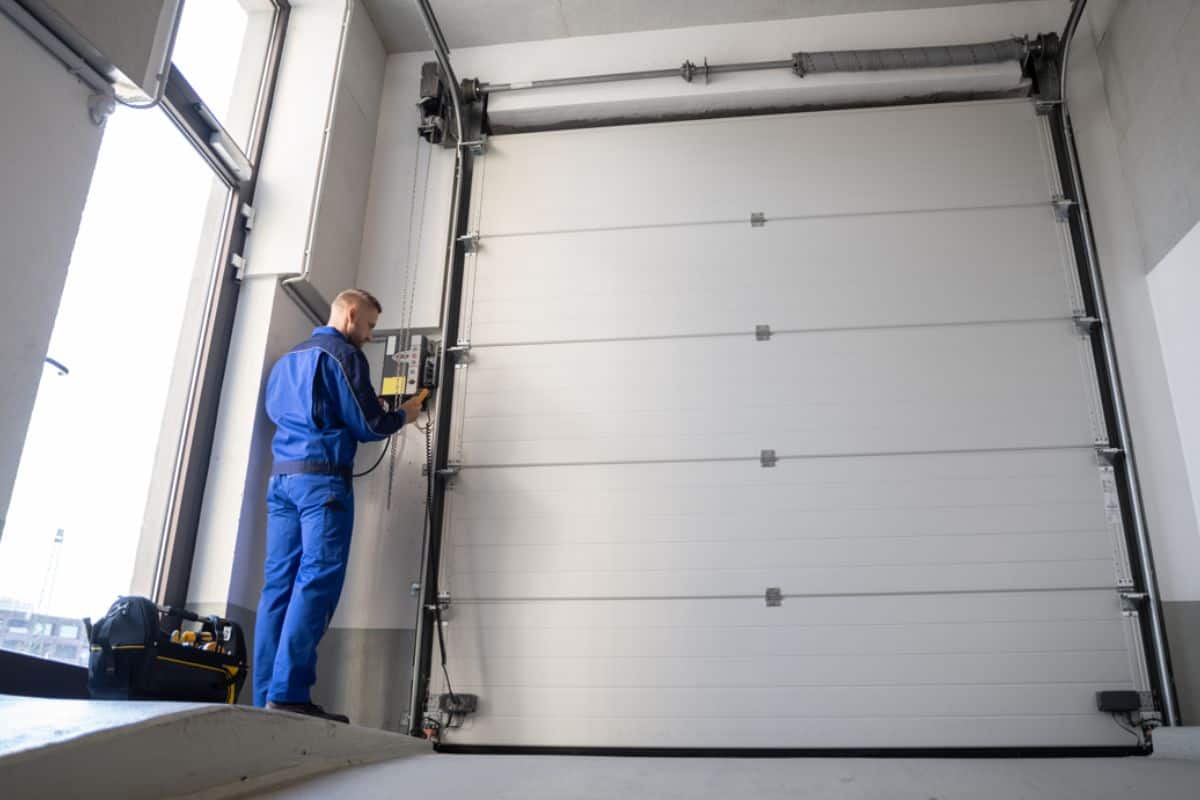
Expect to spend between $220 and $550 to have a garage door opener professionally installed.
The cost of the opener alone ranges between $150 and $500, plus labor, which can take two to six hours and cost an additional $65 to $85 per hour.
Additionally, keypads for garage door openers can cost anywhere from $10 to $70 depending on the model. Most fall between $30 and $40.
Click here to see this garage door keypad on Amazon.
Also, you can select the type of bulb to use and keep in mind to grab a fresh one. While other bulbs typically cost between $10 and $20, LED lights are less expensive; nevertheless, over time, the cost will be offset by the energy savings.
Here are other factors that can affect the cost of a garage door opener installation:
Type
Each type has its advantages, including belt, chain, screw, and direct-drive variants. If you have a detached garage, a louder, less expensive chain-driven type might be suitable for you. You might prefer a quieter choice if your garage is connected to your home.
Model, Brand, & HP Rating
Many companies provide high-quality garage door openers. Not all manufacturers produce all varieties of garage door openers, and each brand has advantages and disadvantages.
Once you've decided on the kind of opener you require, you can work out which brand delivers the features you need at a price that works for you. Expensive garage door opener models typically offer more features and more horsepower.
Parts
A garage door opener installation requires additional components. Springs, tracks, belts, cables, and weights are a few examples of them.
How Much Does It Cost To Maintain A Garage Door Opener?
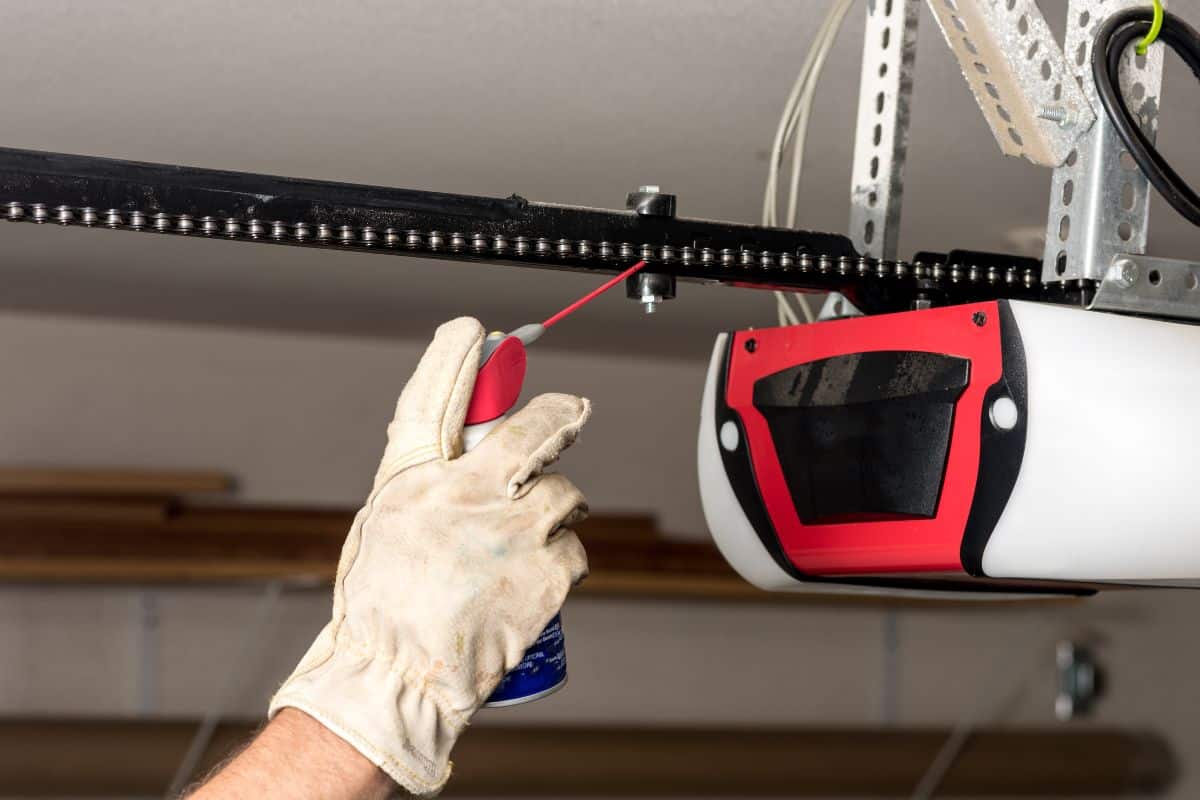
Your garage door opener will last longer if you do routine maintenance. If you decide to hire a professional to perform the maintenance, budget approximately $130 for labor and $50 to $300 for opener repairs.
What Is the Lifespan Of A Garage Door Opener?
On average, they can last 10 to 15 years, and with appropriate care, they can last even longer. Some homeowners feel confident servicing their garage door openers regularly, while others would rather hire a technician to tighten loose hardware, oil a chain, or grease rails.
What Are The Types Of Garage Door Openers?
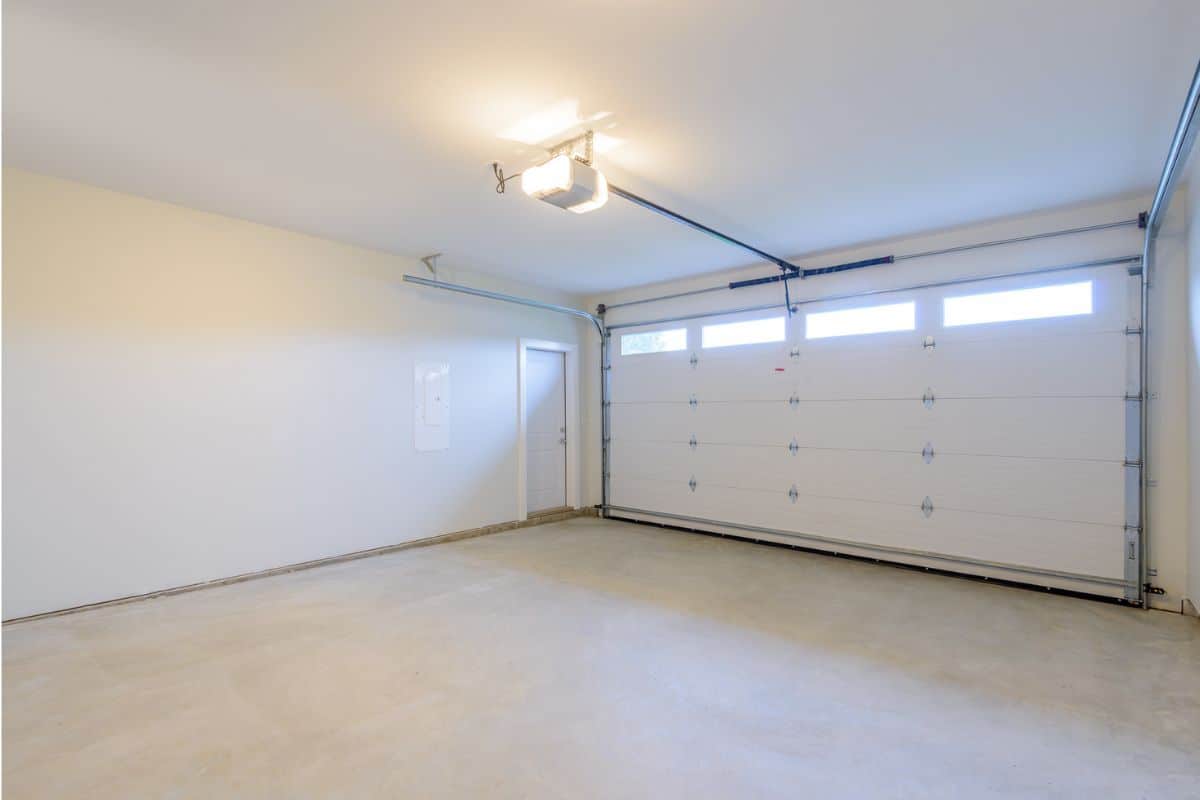
Here are a few of the garage door opener varieties that are offered:
Chain-Driven Type
This type has a trolley (carriage) that is connected to a metal bar called a J-arm that is mounted to the garage door as well as a chain similar to a bicycle chain that pushes or pulls the trolley.
The noise and vibration caused by metal-to-metal contact may be an annoyance if your garage is located underneath a bedroom—probably not if the garage is unattached.
Modern chain-driven devices are substantially quieter than previous ones thanks to DC motors and gentle start/stop technology.
Click here for this chain-driven garage door opener on Amazon.
Belt-Driven Type
The design of this kind is comparable to chain-driven variants, with the exception that the trolley is propelled or pulled by a strengthened belt.
The belts might be made of rubber reinforced with steel, fiberglass, or polyurethane. Chain-driven openers are as dependable, although belt-driven openers are quieter. Belt-driven units are more expensive than chain-driven ones by $30 to $60, which is a drawback.
Click here for this belt-driven garage door opener on Amazon.
Screw-Driven Type
When using screw-driven openers, a threaded steel rod rotated by a motor supports the trolley. Manufacturers assert that this design requires less maintenance than alternative systems since it has fewer moving parts.
However, screw-driven openers have experienced issues in areas where there are significant temperature changes from summer to winter. They make more noise than belt-driven openers as well. But lately, some manufacturers improved the temperature sensitivity and sound level of screw-driven openers.
Additionally, screw-driven openers are among the fastest available today, opening a door in 10-12 inches/second in comparison to the typical 6-8 inches/second.
Jackshaft Type
You can mount this opener next to the garage door, unlike previous systems. The torsion bar is turned and the garage door is raised by a 24-volt DC motor, which is connected to pulleys and wires.
When the motor turns around, the door drops, releasing the strain on the cables. This system is both dependable and silent. Furthermore, it is suitable for garages with high or low ceilings and keeps the ceiling clear for overhead storage.
When compared to most other types, jackshaft openers are more expensive.
Click here for this jackshaft garage door opener on Amazon.
Direct-Drive Type
Because there is only one moving component—the motor—direct-drive devices are said to be the quietest of all garage door equipment.
The motor, which is not a trolley, was created and produced in Germany. It moves along a stationary chain that is encased in an overhead rail. The moving motor is connected to the door by a J-arm.
The price of direct-drive units is comparable to that of belt-driven ones, and they include lifetime warranties.
DC-Powered Type
Compared to AC motors, DC motors are more effective, faster, smaller, lighter, smoother functioning, and quieter. Many have variable speeds, which makes soft-start and soft-stop technologies possible.
In addition, battery backup solutions are an option. In more recent models, the battery is built into the housing of the opener motor. Depending on how frequently you open and close the door, your garage door openers will continue to operate if the power is out for up to two days.
Click here for this DC-powered garage door opener on Amazon.
Is It Necessary To Install A Battery Backup For Your Garage Door Opener?
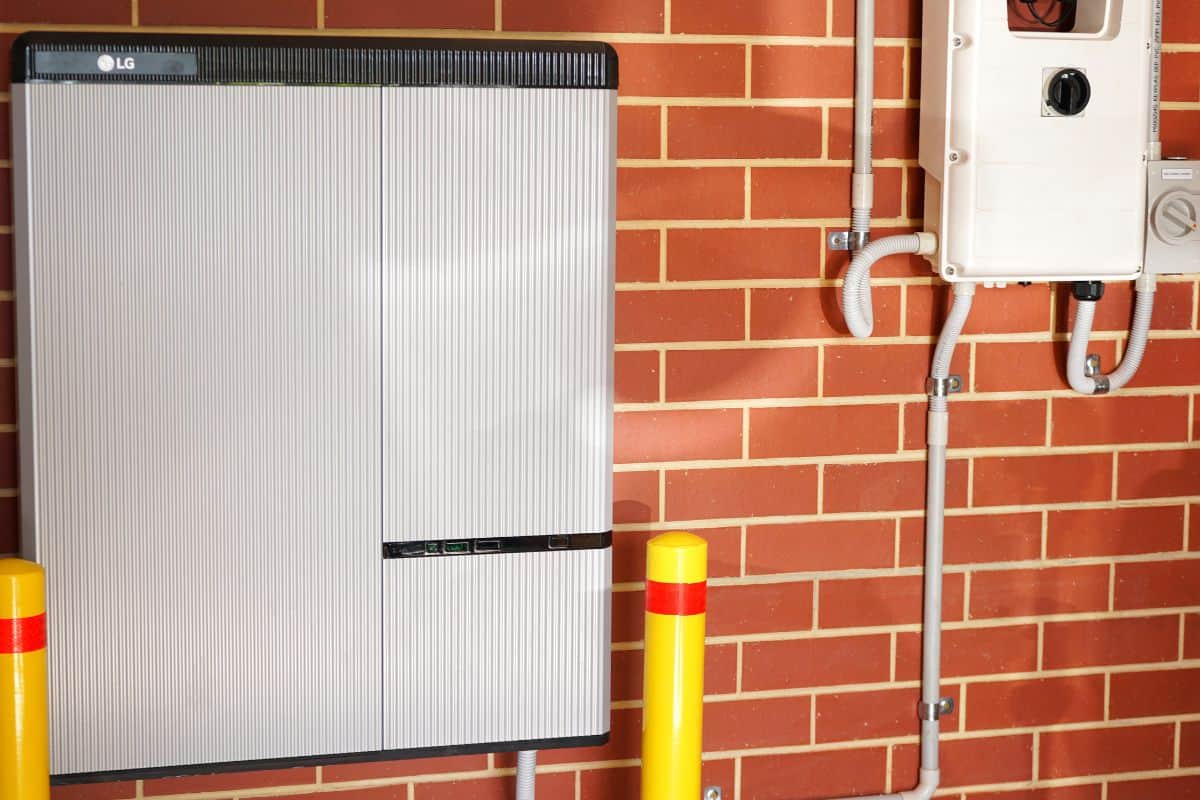
Your opener needs a battery backup since it enables you to leave and enter your home in the event of a power outage. This feature is especially helpful in an emergency. Additionally, garage door openers must have battery backups in areas like California.
As of the 1st of July, 2019, the state of California mandated that a backup battery must be a requirement for residential garage door openers that were being marketed or installed for the first time.
All home builders, contractors, and other members of the housing business are required to install backup battery systems as a result of this mandate.
In Closing
The amperage requirement of a garage door opener ranges from 3-5 amps depending on the lighting you have. That's why this type of device usually requires a 15- or 20-amp circuit breaker.
Fortunately, they don't need a dedicated circuit. Instead, you can use a dedicated outlet to power them. Additionally, you can add a battery backup so you can still use them if there is a power outage.
If you enjoyed reading this article, you can check out our other garage posts below:





